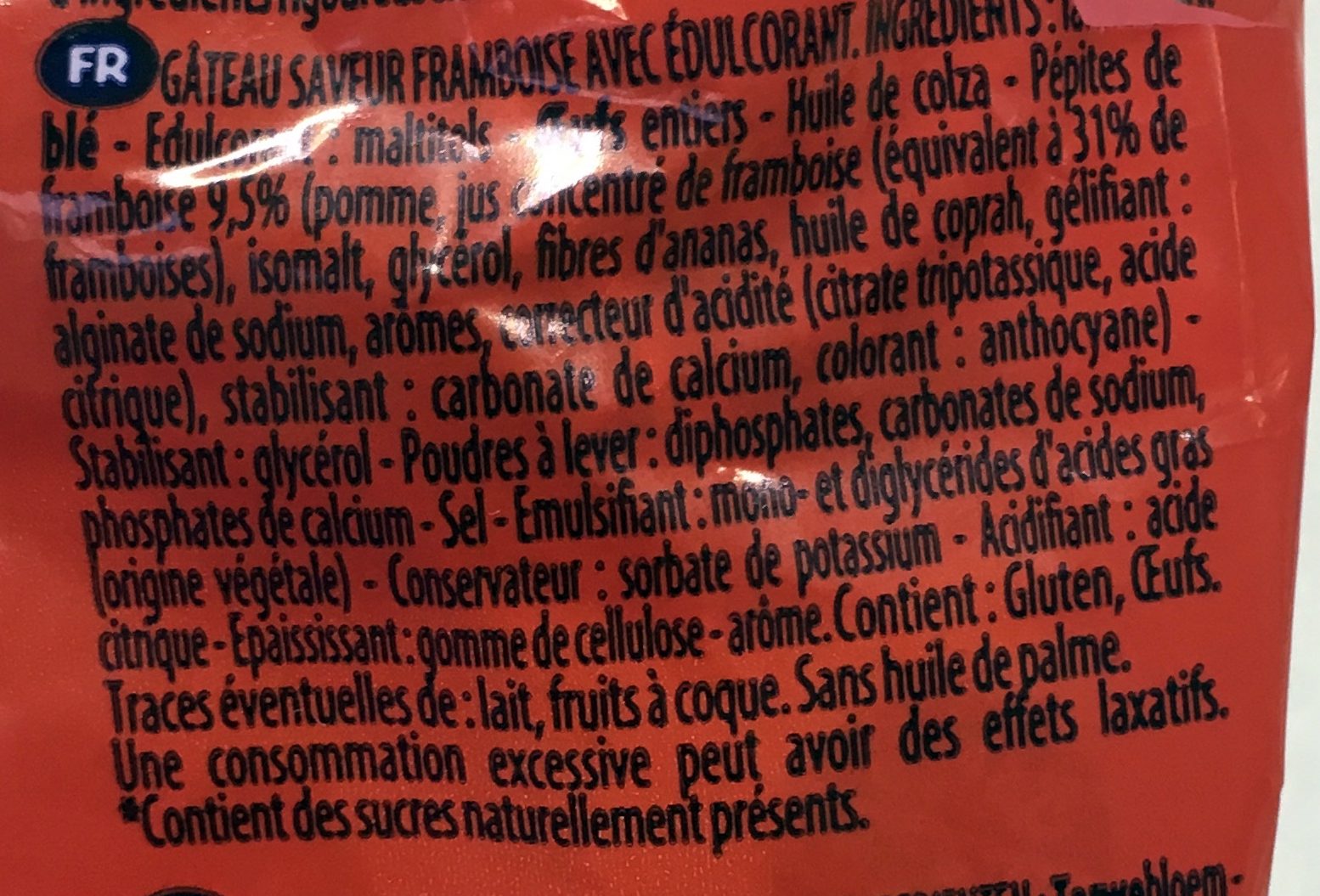Mini cake framboise - Ker Cadélac - 30 g e
This product page is not complete. You can help to complete it by editing it and adding more data from the photos we have, or by taking more photos using the app for Android or iPhone/iPad. Thank you!
×
Barcode: 3259426022319 (EAN / EAN-13)
Common name: Gâteau saveur framboise avec édulcorant - Mini Cake Saveur Framboise
Quantity: 30 g e
Brands: Ker Cadélac
Categories: Snacks, Desserts, Sweet snacks, Biscuits and cakes, Cakes
Labels, certifications, awards:
Low or no sugar, Excessive consumption can have laxative effects, Green Dot, No added sugar, No palm oil, Produced in Brittany, With sweeteners
Manufacturing or processing places: Bretagne, France, Tourc'h
Countries where sold: France
Matching with your preferences
Environment
Packaging
Transportation
Report a problem
Data sources
Product added on by openfoodfacts-contributors
Last edit of product page on by packbot.
Product page also edited by beniben, ecoscore-impact-estimator, kiliweb, tacite, yuka.V1lzY0FhTUkvK0Fob3M4LzN6MkorOUVweWFDVGZtT0ZDdWtTSWc9PQ, yuka.VnFZQ01Jc2JxS1FObE1GaSswaks2OHh5bDcveFJuMklHdElxSVE9PQ, yuka.sY2b0xO6T85zoF3NwEKvlnVdYvv4oRSYNEP6q3KM7eqPD5zjWcxWwLPrbKs.
Last check of product page on by beniben.










